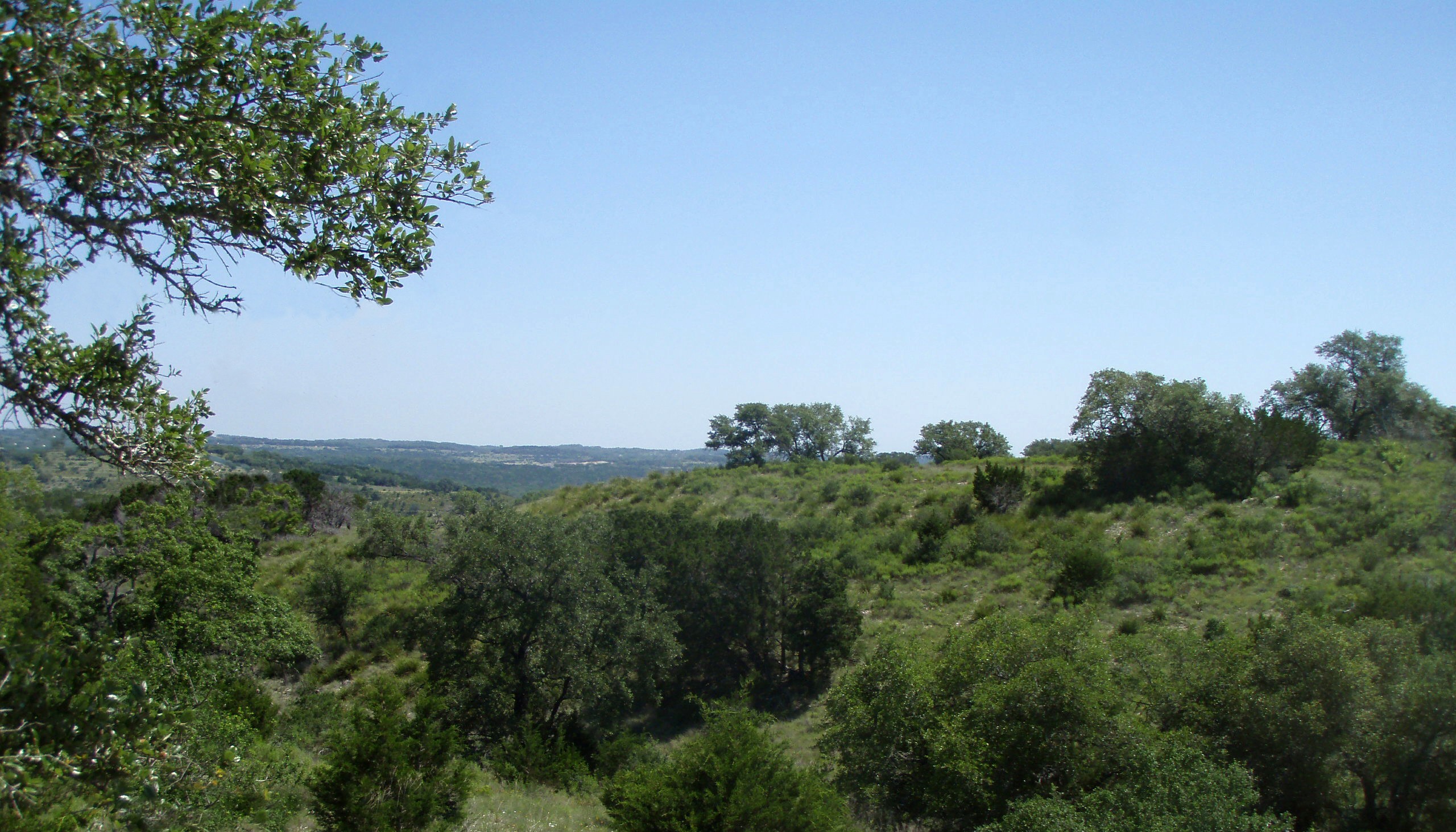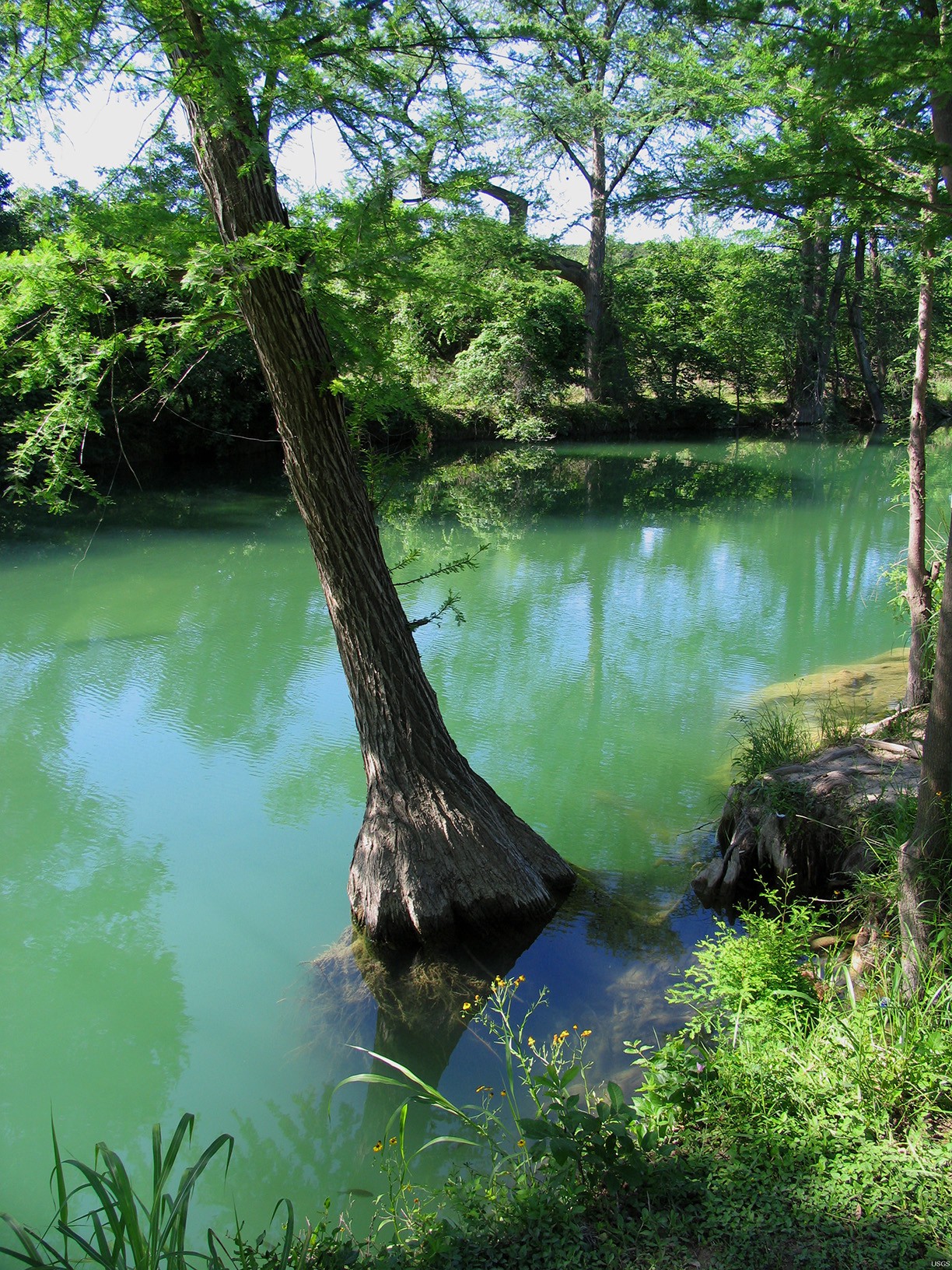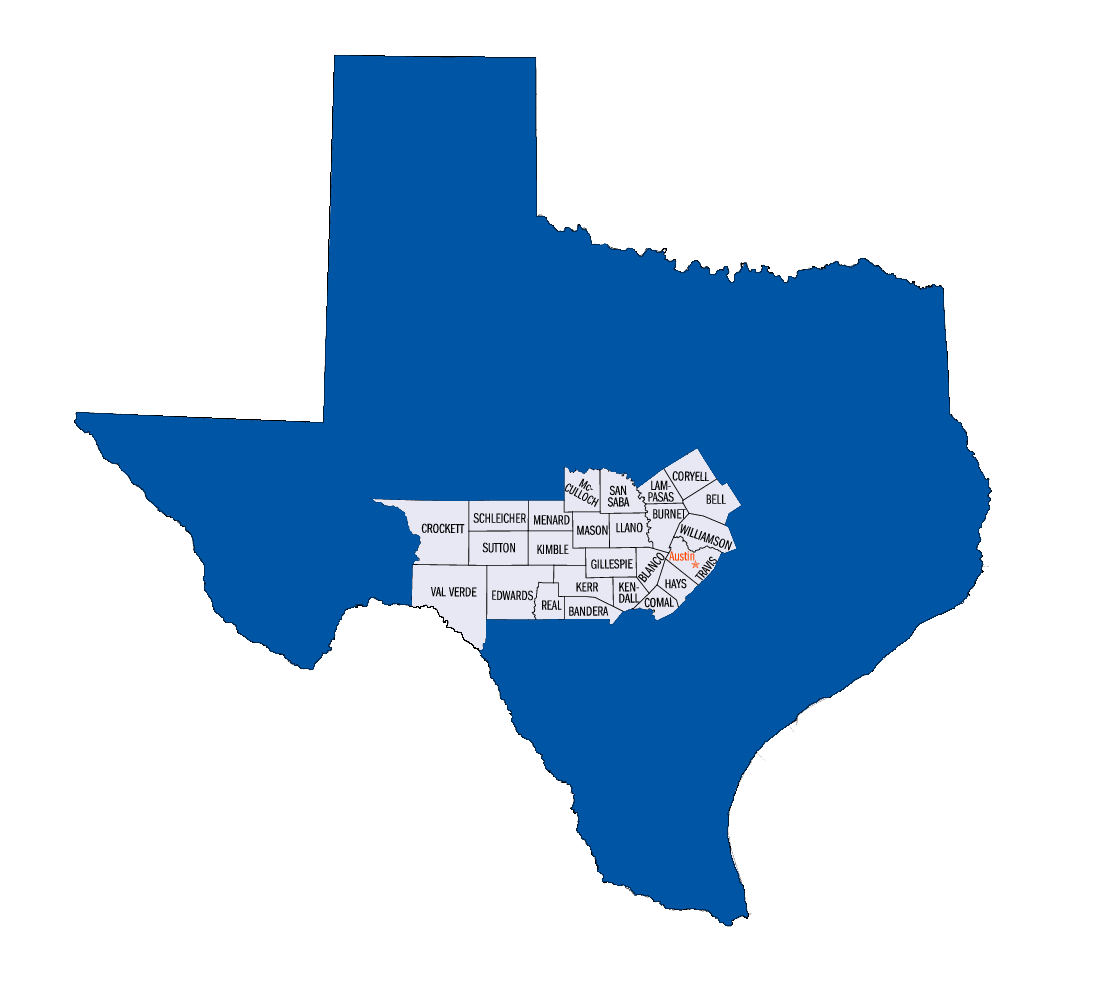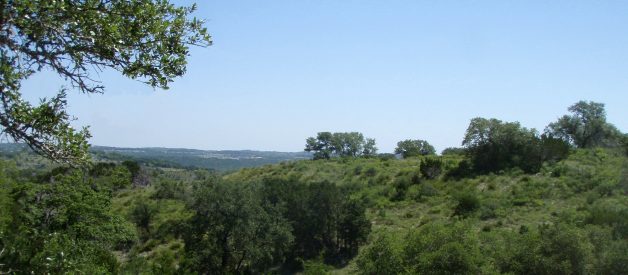
Texas has seven very distinct regions, all with their own unique characteristics. One of the most popular regions is the Texas Hill Country, located in Central Texas.
The Hill Country region sits upon the Edwards Plateau, a savanna with a bedrock of limestone, which has slowly eroded over millions of years, creating beautiful rolling hills and grasslands. The Edwards Plateau is bordered to the south and east by the Balcones Fault, in the north by the Llano Uplift and Llano Estacado, and to the west by the Pecos River and Chihuahuan Desert. The Hill Country is the fourth largest region in Texas at 31,000 square miles with an average rainfall of 15?34 inches per year.
 Medina River in Bandera County | U.S. Geological Survey | Photo by Stewart Tomlinson
Medina River in Bandera County | U.S. Geological Survey | Photo by Stewart Tomlinson
There are many natural springs and underground lakes in this area, almost all of which flow from the Edwards Aquifer ? a subterranean layer of rock that captures and stores water. One such place is Spring Lake in the city of San Marcos. According to the Meadows Center for Water and the Environment at Texas State University in San Marcos, ?two hundred springs bubble up [from Spring Lake] to form one of the largest aquifer-driven spring systems in the world.? The water from these springs runs into the San Marcos River, which flows into the Guadalupe River, one of the three largest rivers in the region. The other two major rivers are the Colorado and Nueces rivers. Most of the rivers in this region generally flow to the south and east through the Hill Country toward the Gulf of Mexico.
Some of the larger lakes in the area include Lakes Buchanan, LBJ, Marble Falls and Travis, all of which are on the Colorado River. Canyon Lake in Comal County is part of the Guadalupe River and is a popular lake for fishing.
One of the most well known places for hiking and camping in this area is Enchanted Rock, 17 miles north of Fredericksburg. This natural wonder is the largest pink granite monadnock (isolated rock hill) in the United States and was designated a Texas Historic Landmark in 1936.

The Texas Hill Country consists of the following counties: Bandera, Bell, Blanco, Burnet, Comal, Coryell, Crockett, Edwards, Gillespie, Hays, Kendall, Kerr, Kimble, Lampasas, Llano, Mason, McCullouch, Menard, Real, San Saba, Schleicher, Sutton, Travis, Val Verde and Williamson.
Deep in the heart of Texas lies Austin, the state capitol, with a population of approximately one million people. Austin is a culturally diverse city, home to the University of Texas, the state government and many thriving industries including music, film, art, high-tech, pharmaceutical, biotechnology and engineering.
There are many smaller cities and towns in this region, some to the south and west of Austin, such as: Blanco, Dripping Springs, Fredericksburg, Kerrville, Marble Falls, New Braunfels, San Marcos and Wimberley. Other cities and towns lie to the north and west of Austin such as: Belton, Copperas Cove, Georgetown, Lampasas, Llano, Pflugerville, Round Rock, and Killeen, home to Fort Hood and the Central Texas State Veterans Cemetery, and Temple, where Texas Veterans reside at the William R. Courtney Texas State Veterans Home.
Many Texas Veterans and military members purchase land in this region for recreational purposes such as hunting, fishing or camping. Others are looking for the perfect place to build a home or start a business. Whatever the reason, it?s important to be well informed about the small land market in this region. One of the best resources to find data on rural land in Texas is the Real Estate Center at Texas A&M University.
?Though Texas land prices vary widely across the state, based on the type of land (farm, timber, grazing) as well as population density, in most regions small properties command higher per-acre prices than larger properties,? says Dr. Charles Gilliland, a research economist at the Real Estate Center who co-wrote a recent Texas Land Market publication about small land parcel prices.
According to the Rural Land Value Trends for 2014, published by the Texas Chapter of the American Society of Farm Managers and Rural Appraisers (ASFMRA), ?the volume of land sales was higher in most areas during 2014 as compared to 2013, while the amount of listings declined in many areas of the Hill Country region.? Not surprisingly, land tracts that are near a source of live water and have direct access to utilities are in high demand, as are those that offer at least some mineral and surface rights.
A great place to begin looking for land for sale are the Texas Veterans Land Board (VLB) Forfeited Land Sales. The VLB offers Quarterly Type I Forfeited Land Sales available to Veterans only and an Ongoing Type II Forfeited Land Sale available to all Texas residents. If there are no forfeited land tracts that interest you, please consider property search websites that list land for sale in Texas, or contact a real estate professional.
If you have questions or need assistance with a land loan, our Veterans Benefits Counselors at the VLB Veterans Call Service Center are happy to help. Please call us at 1?800?252-VETS (8387) or send us an email at [email protected].
Stay tuned for our next blog post in this series featuring the Prairies and Lakes region!


